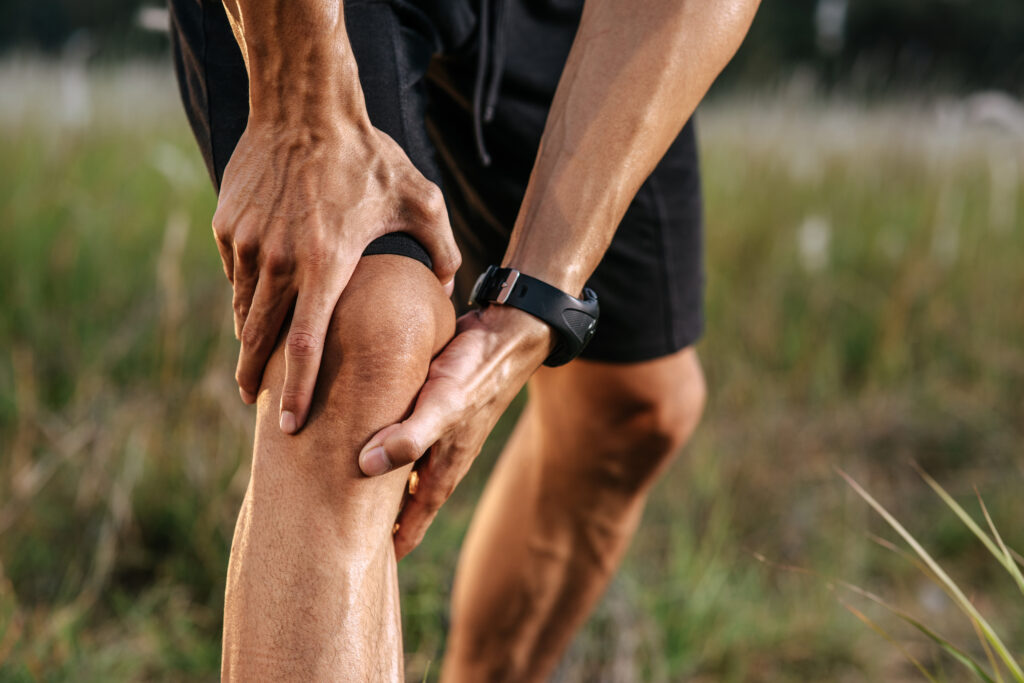When you think about boosting your mobility and flexibility, it's easy to overlook the profound impact these improvements can have on your daily life. Enhanced range of motion not only aids in injury prevention but also plays a significant role in promoting better posture and alleviating pain. You might be surprised to learn how these benefits extend beyond physicality, influencing your mental well-being too. As you consider how to integrate these practices into your routine, you may wonder what specific advantages you can gain—let's explore those together.
Enhanced Range of Motion
Improving your mobility often starts with enhancing your range of motion. When you focus on increasing flexibility in your joints and muscles, you'll find it easier to perform daily tasks, engage in physical activities, and even enjoy your favorite sports. Greater range of motion means you can move more freely and efficiently, which can lead to improved overall performance in everything you do.
To enhance your range of motion, begin by incorporating dynamic stretches into your routine. These stretches warm up your muscles and prepare them for movement. Think about movements like leg swings, arm circles, or torso twists—these can help loosen up tight areas and get your blood flowing.
It's important to listen to your body during these exercises; if something doesn't feel right, modify your approach or seek guidance.
Static stretching can also play an important role in improving flexibility. After your workouts, take time to stretch the major muscle groups, holding each stretch for 15 to 30 seconds. This practice lengthens the muscles and helps maintain their elasticity, which is essential for a healthy range of motion.
Another effective method is incorporating yoga or Pilates into your routine. These practices emphasize controlled movements and deep stretching, promoting not just flexibility but also balance and strength.
Injury Prevention
When it comes to injury prevention, enhancing joint stability and improving muscle coordination are key.
You'll find that stronger joints and better coordination help you move safely and effectively.
Enhanced Joint Stability
Many athletes and active individuals overlook the importance of enhanced joint stability in preventing injuries. Strong, stable joints are vital for maintaining balance and control during physical activities. When your joints are stable, you're less likely to experience sprains, strains, or other injuries that can sideline you for weeks or even months.
To enhance joint stability, you should focus on strengthening the muscles around your joints. Incorporating exercises that target these muscles can greatly improve your overall stability. Think about adding resistance training, balance exercises, or functional movements into your routine. Activities like squats, lunges, and planks can help build the necessary strength and stability.
Additionally, maintaining flexibility through stretching can complement your stability efforts. It's important to verify that your muscles aren't too tight, as this can lead to compensatory movements and increase your injury risk.
Improved Muscle Coordination
Effective muscle coordination plays an essential role in injury prevention, allowing your body to move fluidly and efficiently during physical activities. When your muscles work together harmoniously, you're less likely to experience awkward movements that can lead to strains or sprains. Improved coordination means better control over your body, helping you maintain balance and stability, especially during dynamic exercises.
By focusing on enhancing your muscle coordination, you're not just boosting your performance; you're also reducing the risk of injuries. Activities that involve quick changes in direction, like running or playing sports, require precise muscle timing. If your muscles aren't well-coordinated, the chances of missteps increase, heightening the risk of injury.
Incorporating exercises like agility drills, balance training, and plyometrics into your routine can greatly improve your muscle coordination. These activities challenge your neuromuscular system, teaching your muscles to respond effectively and efficiently.
As a result, you'll notice better performance and a lower likelihood of injuries. So, prioritize muscle coordination in your training regimen, and you'll not only enhance your mobility and flexibility but also safeguard yourself against potential injuries.
Improved Posture
Improving your posture can transform not just how you look, but how you feel throughout the day. When you stand tall and sit straight, you project confidence and energy, which can influence your interactions and overall well-being.
Good posture aligns your body in a way that enhances your functionality, allowing you to move freely and efficiently. Here are four key benefits you'll experience with improved posture:
- Enhanced Breathing: Standing and sitting with proper posture opens up your chest and diaphragm, allowing for deeper breaths. This can increase oxygen flow to your brain and muscles, boosting your energy levels.
- Increased Confidence: Good posture not only affects how others perceive you but also how you perceive yourself. When you carry yourself well, you may feel more self-assured and ready to tackle daily challenges.
- Better Circulation: Maintaining a proper alignment helps improve blood flow throughout your body. This can lead to heightened alertness and reduce feelings of fatigue during long hours of sitting or standing.
- Greater Focus and Productivity: With improved posture, you're likely to experience less distraction from discomfort. This focus can translate into higher productivity at work or during your daily tasks.
Alleviation of Pain
Alleviating pain is vital for maintaining an active lifestyle and overall well-being. When you experience discomfort, whether it's from muscle stiffness, joint issues, or chronic conditions, it can hinder your ability to move freely and engage in daily activities. By focusing on mobility and flexibility, you can considerably reduce pain, allowing you to enjoy life more fully.
Engaging in regular stretching and mobility exercises helps to improve blood circulation, which promotes healing in painful areas. This increase in blood flow can alleviate muscle tension and reduce inflammation, making movements easier and less painful. If you incorporate flexibility routines, you'll likely notice that your range of motion improves, leading to less strain on your body when performing everyday tasks.
Additionally, maintaining proper alignment and posture through mobility training can help you avoid unnecessary aches. When your body is aligned, it distributes weight evenly, reducing the pressure on specific joints and muscles. This means fewer chances of developing pain from repetitive movements or poor posture.
Listening to your body is essential. If you feel pain during certain movements, modifying those exercises or seeking guidance from a professional can prevent further discomfort.
Increased Athletic Performance
Boosting your mobility and flexibility can dramatically enhance your athletic performance. When you're more flexible, you can move more freely and efficiently, which translates into better overall results in your sport.
Here are four key benefits of improved mobility and flexibility that can elevate your game:
- Greater Range of Motion: With increased flexibility, your joints can move through a fuller range of motion. This means you can execute complex movements more effectively, whether it's a deep squat in weightlifting or a high kick in martial arts.
- Improved Technique: Enhanced mobility allows you to maintain proper form during your activities. When your body moves as it should, you reduce the risk of injury and improve your overall technique, leading to better performance outcomes.
- Faster Recovery: Better flexibility helps your muscles recover more quickly after intense workouts or competitions. This means you can train harder and more frequently, giving you an edge over your competition.
- Increased Power and Speed: When your muscles are more flexible, they can contract more efficiently. This efficiency translates into increased power and speed, whether you're sprinting, jumping, or throwing.
Investing time in mobility and flexibility training isn't just a nice-to-have; it's essential for releasing your athletic potential.
Better Daily Functionality
When you improve your mobility and flexibility, you'll notice enhanced movement efficiency in your daily activities.
This boost translates to better task performance, making everything from climbing stairs to carrying groceries easier.
Ultimately, you'll find that even the simplest tasks become more manageable and enjoyable.
Enhanced Movement Efficiency
Enhanced movement efficiency transforms daily activities into seamless experiences, allowing you to navigate through life with ease. When you enhance your movement efficiency, you'll notice a significant improvement in how you approach everyday tasks.
Here are some key benefits you might experience:
- Reduced Fatigue: By utilizing your body's natural mechanics, you'll expend less energy on simple movements, helping you feel less tired throughout the day.
- Improved Posture: Efficient movement encourages better body alignment, which helps maintain good posture during daily activities, reducing strain on your muscles and joints.
- Increased Range of Motion: Enhanced movement efficiency often leads to greater flexibility, allowing you to reach, bend, and twist more freely, making tasks easier and more enjoyable.
- Quicker Recovery: When you move efficiently, your body can recover faster from physical activities, minimizing soreness and stiffness, and keeping you active longer.
Embracing enhanced movement efficiency not only makes your daily life more manageable but also promotes a healthier, more vibrant lifestyle.
You'll find that simple tasks become less intimidating, allowing you to focus on what truly matters.
Improved Task Performance
Improving task performance can dramatically change how you handle daily responsibilities. When you boost your mobility and flexibility, you'll find that everyday activities become easier and more efficient. Whether it's reaching for items on a high shelf, bending down to tie your shoes, or even just walking briskly, enhanced mobility helps you accomplish these tasks with less effort and discomfort.
As you enhance your physical capabilities, you're likely to notice a significant improvement in your overall productivity. You'll move through your day with greater ease, allowing you to focus more on your work or personal projects rather than struggling with simple movements. This increased efficiency translates to better time management, giving you more freedom to engage in leisure activities or spend quality time with loved ones.
Moreover, improved task performance can lead to a heightened sense of confidence. When you can move freely and perform tasks effectively, you'll feel empowered to take on new challenges. This boost in self-assurance can positively impact various aspects of your life, making you more resilient and adaptable.
Embracing mobility and flexibility isn't just about physical health; it's about enhancing your quality of life.
Enhanced Mental Well-Being
Through regular mobility and flexibility exercises, you can greatly boost your mental well-being.
These activities not only enhance your physical capabilities but also play a vital role in fostering a healthier mindset. When you make time for stretching and mobility work, you're nurturing both your body and mind.
Here are four key benefits that come from improved mobility and flexibility:
- Reduced Stress Levels: Engaging in these exercises helps release endorphins, the body's natural stress relievers. As you stretch and move, you'll find your mind becomes calmer and more focused.
- Enhanced Mood: Regular physical activity, including mobility work, can lead to an uplifted mood. You might notice that your feelings of joy and contentment increase, making it easier to tackle daily challenges.
- Improved Sleep Quality: As your body becomes more comfortable and relaxed through mobility and flexibility exercises, you may find it easier to fall asleep and stay asleep, leading to better overall mental health.
- Increased Mind-Body Connection: Focusing on your movements during these exercises promotes mindfulness. This heightened awareness can improve your mental clarity, helping you to better manage thoughts and emotions.
Conclusion
Incorporating mobility and flexibility training into your routine can transform your well-being. By enhancing your range of motion, you not only prevent injuries but also improve your posture and alleviate pain. You'll notice a boost in your athletic performance and daily functionality, making everyday tasks easier. Plus, the mental benefits can't be overlooked—you'll feel less stressed and more active. Embrace these practices, and enjoy a healthier, more fulfilling life!



